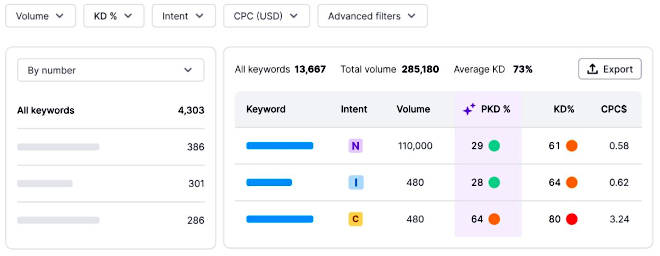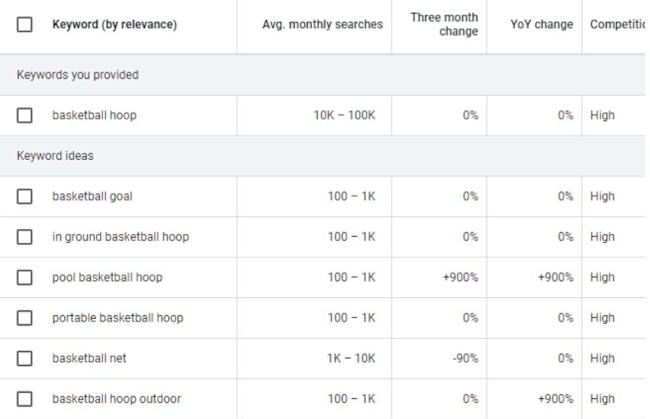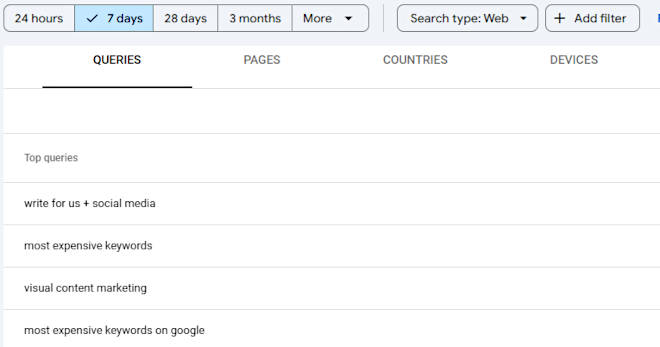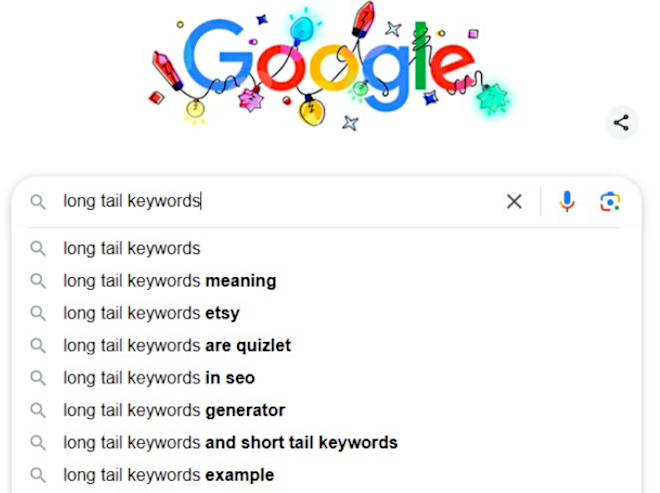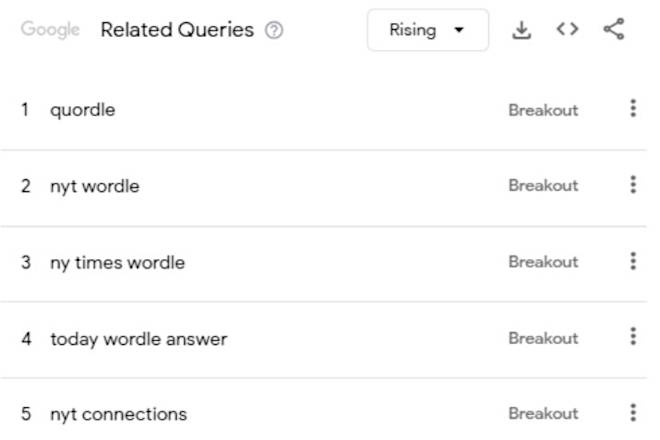Getting your website noticed can feel like a daunting task. There are lots of digital marketing options out there, and SEO (Search Engine Optimisation) is essential. It’s a long-term growth strategy that can help your business gain visibility, attract more visitors, and ultimately, increase revenue. But SEO isn’t a quick fix — it requires patience, consistency, and a clear plan.
A great way to build a strong SEO foundation is by focusing on the right keywords. With so many options, it can be hard to know where to begin, but long-tail keywords are the smart place to start. These specific phrases help attract the right audience and improve your chances of ranking, especially if your website is new.
What Are Long Tail Keywords?
Long-tail keywords are phrases made up of three or more words, and they focus on a specific topic or niche. While broad keywords might be something like “SEO” or “digital marketing,” a long-tail keyword would narrow down the focus, such as “SEO agency for small businesses” or “digital marketing consultant for start-ups.”
These keywords can have either a commercial or informational purpose, depending on whether the user is looking to buy something or gather more information. Long-tail keywords typically have a lower search volume because they are more focused, but this focus makes them highly relevant to the right audience.
For instance, if someone searches for “SEO,” they could be looking for anything from a general definition to advanced strategies. However, if they search for “SEO agency for small businesses in Sheffield,” they are likely looking for a very specific service. By targeting these longer, more specific phrases, you can tap into an audience that is more likely to convert.
Why Are Long Tail Keywords Important?
Long-tail keywords are often overlooked by website owners and marketers who focus on shorter phrase, higher competition keywords. Does anyone have a boss who is obsessed with ranking for just one specific, highly competitive search term?
While broad terms may attract more searches, they are also harder to rank for due to the fierce competition. Long-tail keywords, on the other hand, offer a way to cut through the noise and directly connect with your target audience.
For new or small websites, it can be nearly impossible to rank for competitive short phrase keywords. Long-tail keywords provide an opportunity to start gaining visibility. They are often less competitive, meaning your content has a better chance of ranking higher in search results.
Over time, this can help build your website’s authority and lead to improved rankings even for more competitive terms.
The Many Benefits Of Using Them
There are several reasons why long-tail keywords should form a core part of your content strategy.
Since long-tail keywords are more specific, fewer websites are trying to rank for them, meaning less competition. This gives you a better chance to appear on the first page of search results. If you’re just starting out, it can be difficult to rank for competitive keywords. Long-tail keywords give you a chance to build visibility and traffic over time.
They also match user search intent more closely than broader terms. This means people are more likely to find exactly what they’re looking for on your site, which can lead to higher click-through rates (CTR) and conversions.
Users searching with long-tail keywords are often further along in their decision-making process. This means they are more likely to click on your content and engage with your site, whether that’s by making a purchase, signing up for a service, or reading more of your articles.
Understanding the long-tail keywords people use also helps you create more specific, in-depth content. You can start to become an authority across a certain niche topic. This can result in higher rankings across multiple search terms as well as increased internal linking opportunities, strengthening your overall site structure.
[See related article: How Long-Tail Keywords Could Be The Key To Your Ranking Success]
Examples Of Long Tail Keyword Use
Now that we’ve covered the theory, let’s look at some examples of long-tail keywords and how they can be used to improve your SEO.
Locations
For local SEO campaigns, adding a location to your keyword attracts users from your business’s area, resulting in more qualified traffic.
- Broad term: SEO agency
- Long-tail keyword: SEO agency in Sheffield
Specific offerings
If you have a unique service or product, long-tail keywords can help you reach users who are searching for something specific. This is particularly useful for users who are in the consideration phase of their buying journey.
- Broad term: Interpersonal training
- Long-tail keyword: Interpersonal training for new managers
Topic clusters
Building topic clusters can demonstrate your expertise in a subject and boost your rankings across related terms. For example, a food delivery business might want to create a topic cluster around fruit and vegetables. Starting with their broad term as a longer term goal, they can then identify long tail keywords people are using across their journey.
- Broad term: Fruit & veg boxes
- Long-tail keywords:
- How to eat more fruit and vegetables
- How to keep fruit and veg fresh for a long time
- Health benefits of fruit and vegetables
- Best fruits and vegetables for smoothies
How To Find Long Tail Keywords
First of all, you need to know what you are looking for! Identifying long-tail keywords can be done by focusing on three key areas:
- Search volume: Tools like Google Keyword Planner, Ahrefs or Semrush can show the monthly search volume for any keyword. Long-tail keywords generally have lower search volumes compared to broader keywords, generally under 100 searches per month.
- Competition: Many keyword tools also offer a competition score, which indicates how difficult it is to rank for a particular keyword. Long-tail keywords tend to have a lower competition score.
- Word count: Long-tail keywords are typically longer, often containing three or more words. By focusing on longer phrases, you can target users who are further along in the buying process or are looking for specific information.
Then you need the right tools. Here are some that will help you find the right long-tail keywords for your content strategy:
- Semrush: The Keyword Magic Tool on Semrush is a powerful way to find long-tail keywords. Simply enter your head term, and the tool will generate a detailed report of related keywords. You can use filters to narrow down the results and focus on low-competition, highly relevant keywords.
- Ahrefs: Another excellent tool is Ahrefs’ Keywords Explorer, which offers similar features. It shows keyword difficulty, search volume, and related queries, helping you discover new long-tail keyword opportunities.
- Google Keyword Planner: Available through Google Ads, Keyword Planner lets you search for keywords related to your topic and view search volumes. For example, if you search for “digital marketing,” you can browse through related long-tail keywords and filter out the ones most relevant to your strategy.
- Google Search Console: If your site has been running for a while, you can use the data in Google Search Console to spot opportunities for long-tail keywords. By filtering your search queries to focus on questions or longer phrases, you can find keywords you haven’t yet created content for. This can highlight areas where you could improve your content to increase click-through rates.
- Searching Google: By typing a broad term into Google, you can see what features show up on the results page. Tools like “People also ask” or “People also search for” often include long-tail keyword ideas. These terms can be useful for creating content that answers specific user questions.
- Google Autocomplete: Before hitting search, look at the suggestions provided by Google’s autocomplete feature. These can give you an idea of what other users are searching for in relation to your chosen keyword.
- Google Trends: Keeping an eye on trending search terms can help you stay ahead of the competition by targeting long-tail keywords that are rising in popularity.
Refining Your Long Tail Keyword Strategy
Once you’ve gathered a list of long-tail keywords, the next step is to integrate them into your content strategy. Firstly, assign your long-tail keywords to specific pages or blog posts on your site. This will help you target multiple keywords and cover different aspects of a topic without duplicating content.
Then ensure that your chosen long-tail keywords appear naturally within your content. Avoid keyword stuffing and aim to write content that genuinely helps users. High-quality, relevant content is essential and the only way you will rank well.
Keep track of how your pages are performing for the targeted long-tail keywords. Use tools like Google Analytics or Search Console to monitor traffic, rankings, and click-through rates. This data will help you refine your strategy over time.
The bottom line
Finding the right long-tail keywords takes time and effort, but the benefits are well worth it. Long tail keywords allow you to create content that is more relevant, less competitive, and better aligned with user search intent.
Whether you’re launching a new website or expanding an established one, long-tail keywords will help you improve your search rankings, drive more targeted traffic, and increase conversions.
[Recommended reading: Why Does Google Care More About Your Visitors Than Your Keywords?]
[Image credits – Main photo: Pixabay; other images or screen prints are from their respective websites or our related articles.]
Ben Foster is a digital practitioner with over 20 years of leadership experience in the technology and digital sector. He is passionate about customer engagement and using technology as an enabler to improve end user experiences. He led the largest health website in the UK to empower millions of patients to manage their own health, using digital as the prime channel. Now leading The SEO Works, he understands the fundamental shift online and believes that as digital growth experts, they can help businesses maximise their online potential. Start your growth journey with their free website SEO checker.


